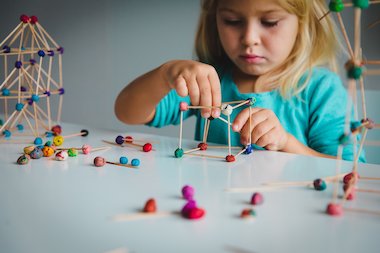Geometry and shape: topic summary
Add to My Folder
Our handy topic summaries can be used to support homework, as well as providing helpful collections of related resources for teachers to use in school or for parents to use for home learning.

Plenty of good hands-on experience using objects easily found in and around the home will be the best way to start introducing two-dimensional (2D) and three-dimensional (3D) shapes. 2D shapes should initially include squares, rectangles, triangles and circles. Children can then move on to cover the parallelogram, the rhombus, the hexagon, the pentagon and the octagon. Discuss the shapes’ properties, including possible lines of symmetry, and use key vocabulary like side, corner, diameter, radius and circumference. 3D shapes collected at home should include cubes, cuboids, cylinders, cones, prisms and pyramids – with the terminology this time switching to faces, edges and vertices (corners). Compare the use of flat and curved faces in each shape. Flat sided 3D shapes are best made in skeletal form using measured straws and blobs of clay or putty at the corners.
This theme also needs to include work on position, direction and movement. Start with simple games using objects or people to illustrate forwards/backwards, close to/far away, right/left, bottom/top, in front of/behind etc. Look at full, quarter, half and three-quarter turns and introduce the terms clockwise and anti-clockwise to show the direction of a movement.
Published 30 July 2020
Reviews
You need to be signed in to place a review.